
Birds of Prey - Raptors
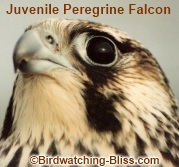
Birds of Prey are predatory birds, but most birds are predators.
For example, most small birds eat insects or feed insects to their nestlings.
Even hummingbirds eat small insects and spiders.
Kingfishers, terns, gulls and herons eat fish, so how do we describe the true Raptorial birds or raptors?
Remember that birds of prey have been referred to as raptors long before the "Jurassic Park" movie introduced us to "Veloci-raptor".
The word "Raptor" comes from an old Latin word that means "to seize", "to snatch" or "to take".
Raptors range in size from tiny Falconets (60 grams - 2.1 ounces) to large Eagles, Vultures and Condors that can weigh 7-9 Kilo-grams (15-20 lbs).
Main Characteristics of True Raptorial Birds:
- Powerful feet with talons for grasping and killing prey.
- Hooked beaks for killing prey and eating flesh.
Scientific Classification of Birds of Prey
There are 287 known species of birds of prey and experts classify them in the different ways.
Here is one classification system that splits the birds of prey into two main groups; called Orders.
Both of these Orders have the two main specialized characteristics listed above; grasping feet with talons and hooked beaks.
Order: Falconiformes - meaning: "Cycle-shaped- falcate" beaks and talons - these are all the falcons, hawks, eagles, kites, harriers, etc.
Order: Strigiformes - meaning: "formed or shaped like screech owls".
This order includes all the species of owls.
screech owls".
This order includes all the species of owls.
The Falconiforms are primarily diurnal (active during day light) the Strigiformes are primarily nocturnal (active at night).
These two orders of birds are not closely related, but possess similar characteristics because of similarities in the way they hunt.
Bird of Prey Families
Falconiformes
- Family Cathartidae -New World (American) Vultures
- Family Sagittariidae - Secretary Bird
- Family Accipitridae - Kites, Accipiters or true hawks, Buteos or true Buzzards, Eagles, Harriers, and Old World (Euro/Asian/African) Vultures
- Family Falconidae - Falcons and Caracaras (also Forest and Pygmy Falcons)
- Family Pandionidae - Osprey
Strigiformes - Owls
- Family Tytonidae - Barn and Grass Owls
- Family Strigidae - Typical Owls
Evolutionary Specializations of Raptorial Birds
- Vision - extreme acuity for diurnal or nocturnal vision
- Specialized feathers, wings and tails - speed, agility, soaring or stealth
- Structure of legs, feet and talons - based upon types of prey
- Structure of beaks - also based upon types of prey
- Color - for display or camouflage
- Hearing - most specialized in nocturnal hunters and harriers
Eagle Eye
 All
of the specializations are important.
All
of the specializations are important.
These specializations make them what they are and allow them to "do what they do".
The most amazing adaptation of the Birds of Prey may be their vision.
To paraphrase an old native American saying:
"When the Winter's first snowflake falls in the forest, the deer hears it, the bear smells it, and the eagle sees it."
An eagle has 8-10 times the number of sensory cells in their eyes as humans do.
This means they have 8-10 times the visual acuity that humans have.
If you have normal 20/20 vision and could see a small animal running across a field 100 yards away, it would be as clear to an eagle as if it were only 10-12 yards away.
That means that if humans can see an animal clearly at 100 yards, an eagle could see it just as clearly at 800-1000 yards.
Birds of Prey Conservation
Birds of Prey around the world are protected under many different laws. In some countries laws are enforced vigorously and in other countries laws designed to protect birds of prey may exist, but are not enforced.
Examples of laws that protect birds of prey as well as other birds are:
- The Migratory Bird Treaty Act
- The Bald and Golden Eagle Protection Act
- The Wildlife and Countryside Act 1981(England and Wales)
And if any species of bird of prey are officially designated as Endangered or Threatened in the U.S., they have additional protection under The Endangered Species Act.
Birds of Prey Slow Motion Video
Slow motion video of a Harris Hawk in flight from the Center for Wildlife Education:
What does Threatened or Endangered Mean?
The words "Threatened" and "Endangered" are commonly used to describe a species that may be in some kind of trouble.
But since these are legal terms, it must be demonstrated (usually in a Court of Law) that a species are really in some sort of trouble.
Legally, "Endangered" means that a species of plant or animal species is in danger of becoming extinct through all or a large part of its range.
"Threatened" means that plant or animal species are likely to be listed as endangered some time in the near future through all or a large part of its range.
In some cases, a species that was previously listed as Endangered may be "down-listed" to Threatened.
The legal process usually starts when someone believes that a species may be declining.
These "Species of Concern", "Species at Risk" or "Imperiled Species" are simply terms used to refer to species that may actually have declining populations or simply may not have enough information about the life history, populations or threats to the species habitats to make that decision.
There is not yet additional legal protection for these species under the Endangered Species Act.
The next step would be to have a Species of Concern listed as a "Candidate Species".
Candidate species have begun the legal process and the U.S. Government (U. S. Fish and Wildlife Service (USFWS) or National Oceanic and Atmospheric Administration (NOAA) Fisheries) has sufficient biological information to documents vulnerabilities and threats to the population.
The next step is to propose to list the species legally as Endangered or Threatened.
Current Endangered and Threatened Birds of Prey in the U.S.
There are currently 91 Species of Birds listed as Threatened or Endangered in the U.S. States and Territories. Nine of those species are Birds of Prey.
There are six species that are currently listed as Endangered:
- California Condor (Gymnogyps californianus) -California, Arizona, Utah
- Northern Aplomado Falcon (Falco femoralis septentrionalis) -Texas
- Hawaiian Hawk (Buteo solitarius)
- Puerto Rican Broad-winged Hawk (Buteo platypterus brunnescens)
- Puerto Rican Sharp-shinned Hawk (Accipiter striatus venator)
- Everglade Snail Kite (Rostrhamus sociabilis plumbeus) -Florida
There are three raptor species currently listed as Threatened by the U.S. Fish and Wildlife Service:
- Audubon's Crested Caracara (Polyborus plancus audubonii) -Florida
- Mexican Spotted Owl (Strix occidentalis lucida) -Arizona, Colorado, New Mexico, Texas and Utah
- Northern Spotted Owl (Strix occidentalis caurina) - California, Oregon, Washington
You will notice that two very high profile species; the Peregrine Falcon and the Bald Eagle are no longer listed as Endangered or as Threatened in the U.S.
The Arctic and American subspecies of the Peregrine Falcon (Falco peregrinus tundruis and F. p. anatum) were listed as Endangered in 1970 under the original Endangered Species Preservation Act of 1966.
In 1984, because populations had begin to recover, the Artic Peregrine Falcon was down-listed to Threatened and was removed from the list entirely in 1994.
The American Peregrine Falcon subspecies had also recovered and was finally removed from the list of Threatened and Endangered species in 1999.
The Eurasian subspecies of Peregrine Falcon (Falco peregrinus peregrinus) is still Endangered.
The Bald Eagle (Haliaeetus leucocephalus) was originally listed as Endangered in 1967 under the Endangered Species Preservation Act of 1966.
After the passing of the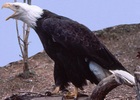 Endangered Species Act of 1973, the Bald Eagle was re-listed in 1978 as
Endangered in 43 of the 48 lower States and was listed as Threatened in the
other five States:
Endangered Species Act of 1973, the Bald Eagle was re-listed in 1978 as
Endangered in 43 of the 48 lower States and was listed as Threatened in the
other five States:
- Michigan
- Minnesota
- Oregon
- Washington and
- Wisconsin
The Bald Eagle has never been listed as Threatened or Endangered in Alaska. Bald Eagle populations have recovered to the point that it was removed from the Threatened and Endangered species list in 2007.
The Osprey (Pandion haliaetus) was listed as Threatened or Endangered in many U.S. States in the 1970s, but was not listed federally by the U.S. Fish and Wildlife Service.
As with the Bald Eagle and Peregrine Falcon, the Osprey has recovered in most areas and has been removed from most of the State's Threatened and Endangered species lists.
Why was Peregrine Falcon and Bald Eagle Listed as Threatened or Endangered?
During World War II, pesticides proved successful in combating typhus and malaria, and after the war, modernization of agriculture began to include the use of pesticides to increase crop yields.
modernization of agriculture began to include the use of pesticides to increase crop yields.
One such pesticide; DDT was very effective and its production and use increased to the point that 1.35 Billion lbs of DDT were used in the U.S. prior to the ban on the use of DDT in the U.S. in 1972.
To make a long story short, the DDT that was sprayed on crops, fields and swamps was washed into the rivers, lakes, bays and oceans and got into the food chain.
Animals and birds that ate fish began to concentrate a form of the DDT pesticide (DDE) in their tissues.
Since Bald Eagles eat fish, they began to get high loads of DDE directly.
Peregrine Falcons do not eat fish, but do eat birds that eat fish, so they also began to store DDE in their bodies.
In birds, DDE interferes with calcium metabolism, so when they tried to reproduce by laying eggs, the egg shells, which are primarily made of calcium were so thin that they broke when the females set on the eggs to incubate them.
Normal Egg vs DDT Egg
By the time Rachel Carson published
Silent Spring![]() in 1962 to draw attention to the damage to wildlife caused by pesticide use, it was obvious that populations of Bald Eagles, Peregrine Falcons, Osprey, Brown Pelicans and many other species were decreasing.
in 1962 to draw attention to the damage to wildlife caused by pesticide use, it was obvious that populations of Bald Eagles, Peregrine Falcons, Osprey, Brown Pelicans and many other species were decreasing.
Even though it has been almost 40 years since the ban on DDT, the pesticide has decreased in most areas, residue can still be found in the sediments of some areas and can still be detected in the tissues of some fish and birds.
Both Bald Eagles and Peregrine Falcons have been tested with high levels of DDE in their tissues, but have proven to be able to produce viable eggs.
Other recent studies have shown that eggshells of some species are still thinner than eggshells prior to DDT use.
By the mid 1970s, many raptor biologists and falconers were attempting to breed the Peregrine Falcon in captivity so that young birds could be released back to the wild by a process known as hacking.
By the early 1980s, Bald Eagles were also being bred in captivity and being hacked back into the wild.
By the early 1990s, Peregrine Falcon populations had recovered to the point that all of the original recovery objectives had been met.
Because of extreme caution, law suits and the normally slow action of government, it took until 1999 for the Peregrine Falcon to be removed from the Endangered Species Act protection.
Let's hope we will all be wiser in the future than we were in the past and can keep the Peregrine Falcon, Bald Eagle and many other birds of prey from ever being threatened or endangered again.
Some Current Endangered and Critically Endangered Birds of Prey of the World
Listed below by Common Name, Scientific Name, Range, Status, and Notes. Birds are not listed in any particular order. Data primarily from iucnredlist.org.
- Madagascar Sea Eagle, Haliaeetus vociferoides -Madagascar - Critically Endangered - very small population of about 120 breeding pairs.
- Madagascar Serpent Eagle, Eutriorchis astur -Madagascar - Endangered - small population, probably less than 1,000, thought to be declining due to deforestation.
- Philippine Eagle, Pithecophaga jefferyi -Philippine Islands - Critically Endangered - very small population probably less than 500 - declining due to deforestation.
- Cuba Hook-billed Kite, Chondrohierax wilsonii -Cuba (Caribbean Sea) - Critically Endangered - very small population probably less than 250 in very small area of the island - probably on the brink of extinction due to deforestation.
- Anjouan Scops Owl, Otus rutilus capnodes -Anjouan Island (Indian Ocean) - Critically Endangered - small populations probably less than 250 due to small area of remaining habitat on the islands, predicted to decline further due to deforestation.
- Sokoke Scops Owl, Otus ireneae -East Africa (Kenya & Tanzania) - Endangered - populations thought to be declining due to forest fragmentation and exploitation of large trees specific for nesting.
- Anjouan Island Sparrowhawk, Accipiter francesii pusillus -Anjouan Island (Indian Ocean) - Probably extinct, last seen in 1958.
- Crowned Solitary Eagle, Harpyhaliaetus coronatus - Argentina, Bolivia, Brazil and Paraguay - Endangered - population is decreasing due to habitat fragmentation, deforestation and direct persecution.
- Javan Hawk-Eagle, Nisaetus bartelsi -Island of Java, Indonesia - Endangered - population is thought to be less than 1000 and likely to decrease due to deforestation and direct trade in Asian bird markets.
- Flores Hawk-Eagle, Nisaetus floris - Flores and nearby islands, Indonesia - Critically Endangered - population probably less than 200 and expected to decrease further due to habitat loss and direct persecution.
- Gundlach's Hawk, Accipiter gundlachi - Cuba (Caribbean Sea) - Endangered - small remaining population probably less than 500 in small areas of the island - population declining due to deforestation and persecution.
- Rideway's Hawk, Buteo ridgwayi - Dominican Republic (Caribbean Sea) - Critically Endangered - small population probably less than 250, last remaining habitat in one small National Park.
- White-Rumped Vulture - Gyps bengalensis - found in Pakistan and India and East to Cambodia to Viet Nam - Critically Endangered - Population still thought to be as much as 10,000, but down from population estimates of at least 2,000,000. After tremendous numbers of vultures were found dead in several countries, research in 2004 identified an anti-inflammatory drug, Diclofenac used to treat cattle as the cause of death due to renal failure when dead cattle are consumed.
- Indian Vulture, Gyps indicus - Pakistan and India - Critically Endangered - population is estimated to have declined as much as 97% since the 1990s, due to use of Diclofenac on cattle.
- Slender-Billed Vulture, Gyps tenuirostris - found in India and Nepal and East to Cambodia and Laos - Critically Endangered - as with other Gyps vultures, populations have declined dramatically the 1990s, due to veterinary use of Diclofenac.
- Egyptian Vulture, Neophron percnopterus - found across Africa and Southern Eurasia - Endangered - population estimated to more than 50,000, but some populations have decreased by as much as 90% in the last ten years. This species is also effected by the drug Diclofenac, but probably also decreasing due to lower ungulate populations.
- Red-Headed Vulture, Sarcogyps calvus - found from India and Nepal and East to Cambodia and Laos - Endangered - population probably less than 10,000, but as with other vultures, the population has declined about 90% in the last ten years. This species is also being effected by the veterinary drug Diclofenac.
- Hooded Vulture, Necrosyrtes monachus - Sub-Saharan Africa - Endangered - population probably still larger than 150,000, but has declined dramatically, potentially due to poisoning, bush meat trade (yes, rumored to be sold in markets as chicken) and Avian Influenza.
- Forest Owlet, Heteroglaux blewitti - Central India - Critically Endangered - population probably less than 250. This species was rediscovered in 1997. The population is thought to be declining due to loss of forest habitat.
- Blakiston's Fish Owl, Ketupa blakiston - Russia, China and Japan - Endangered - the population of this species is thought to be less than 1000 and probably decreasing due to loss of habitat along rivers due to conversion to agriculture and the building of dams.
- Perrnambuco Pygmy Owl, Glaucidium mooreorum - Brazil - Critically Endangered - discovered in 1990 and known only from a small forest reserve in Pernambuco, Brazil, the population is estimated to be less than 50.
- Flores Scops Owl, Otus alfredi - Flores Island, Indonesia - Endangered - found only at two locations, the population is probably less than 2,500 but predicted to decline due to continued deforestation of the islands.
- Biak Scops Owl, Otus beccarii - Biak-Supiori island in Indonesia - Endangered - the population is probably less than 10,000 and presumed to be declining due the continued loss of lowland forest habitat to farming and logging.
- Comoro Scops Owl, Otus pauliani - Comoro Island (Indian Ocean) - Critically Endangered - found only on the remaining forested areas, there are probably less than 2,000 individuals and the population is expected to decrease as the human population converts the last forest to agriculture.
- Siau Scops Owl, Otus siaoensis - Island of Siau Malaysia - Critically Endangered - known from a single specimen collected in 1866, this population may be extinct. Surveys in 2009 did not identify any Siau Scops owls, but unidentified owl calls and interviews with locals keep hope alive.
- Seychelles Scops Owl, Otus insularis - Seychelles Islands (Indian Ocean) - Endangered - apparently a very small, but stable population of about 250.
- Moheli Scops-owl, Otus moheliensis - Moh??li, Comoro Islands - Critically Endangered - the population is probably less than 400 and expected to decrease as only 5% of forests remains on the island.
- Serendib Scops Owl, Otus thilohoffmanni - Sri Lanka - Endangered - evidently not detected until 1995, this species lives only in "wet-zone" rainforest on the Sri Lanka. The populations is estimated to be less than 250 and expected to decline further as logging and mining operations encroach on the last large blocks of forest.
- Long-Whiskered Owlet, Xenoglaux loweryi - Peru - Endangered - this species was discovered in 1976 at two locations in Northern Peru. The population is assumed to be less than 1,000 individuals and the populations are also assumed to be under threat from deforestation for timber and agriculture.
- Reunion Harrier, Circus maillardi - R??union island (Indian Ocean) - Endangered - population estimated to be less than 500, threats include poaching and development.
- White-collared Kite, Leptodon forbesi - Brazil - Critically Endangered - the population is estimated at less than 100, threats include logging, burning and conversion of forest to agriculture.
- Grey-backed Hawk, Leucopternis occidentalis - Ecuador and Peru - Endangered - population probably less than 250 and expected to decrease as 90% of original forested habitat has been altered.
- Congo Bay-Owl Phodilus prigoginei - Central Africa; The Congo possibly Burundi and Rwanda - Endangered - population probably less than 10,000 and expected to decrease due to growing human population need to clear forest for agriculture.
- Taliabu Masked-Owl Tyto nigrobrunnea - Sula Islands, Indonesia - Endangered - population is thought to be less than 1,000 and threats include continued logging.
We highly recommend A Photographic Guide to North American Raptors![]() for anyone interested in raptors.
for anyone interested in raptors.
Below are more links to our birds of prey pages with detailed information and pictures:
Coopers Hawk vs. Sharp-shinned Hawk ID
|
Our Favorite Bird Watching Binoculars, Squirrel-Proof Feeder & Hummingbird Feeder Read Our Reviews: |
||
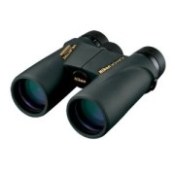
Nikon Monarch M5
Best mid-priced bird watching binoculars. Waterproof, shockproof, multi-coated ED-Glass. |
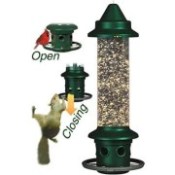
|
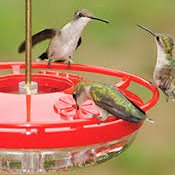
Best Hummingbird Feeder
Drip-Free, Ant-moat, Durable, Easy to Fill and Clean. |
| Click Images or Links To View More Info | ||
